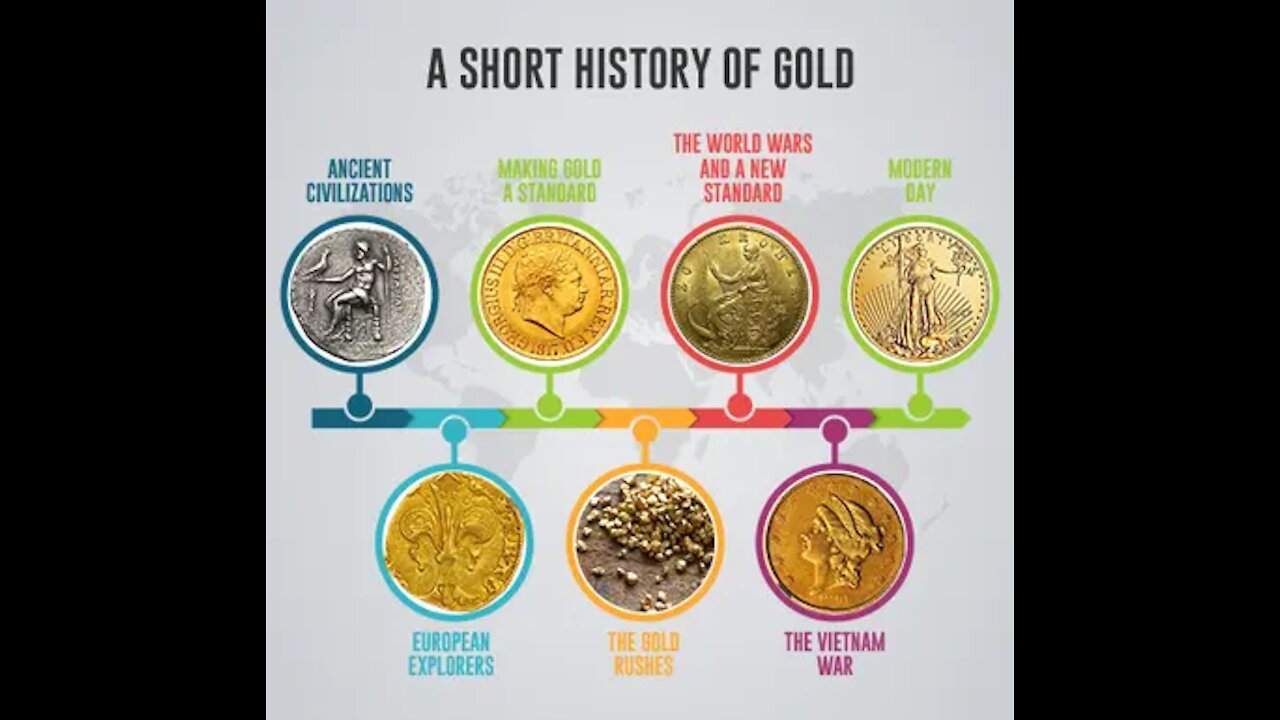Premium Only Content

Gold 40,000 BC History Earliest Records ancient caves
Earliest Records
Archaeologists cannot pinpoint an exact moment in human history when gold was discovered, but traces have been found in ancient caves dating back to 40,000 BC. Gold proved to be a popular metal to ancient peoples due to the natural, malleable state in which it is found in nature.
Ancient Civilizations
Ancient Egyptians
The first solid evidence archeologists have of human interaction with gold comes from the ancient Egyptians in roughly 3,000 BC. The metal was not only a status of wealth, but was also an important part of Egyptian mythology and daily life.
Everything from jewelry to the capstones of the Great Pyramids to King Tut’s funeral mask was crafted from gold. The Egyptians also created detailed maps providing information on where to find gold mines and the best gold deposits from around the kingdom.
The Egyptians were responsible for numerous “firsts” in the area of gold advancement. They were the first humans to smelt gold, craft from it, and alloy the metal with others for various purposes. Additionally, the Egyptians formulated the first gold ratio as pertaining to the metal’s value: one gold piece was equal to two and a half silver pieces. Gold was, however, never used as bartering material for the Egyptians; they opted for agricultural products and other goods.
The Lydians
It was not until the Lydians that gold was used as coinage and currency in 564 BC. The Kingdom of Lydia, located in what is now western Turkey, was the first nation to use gold and its alloys to create and use as a system of trade.
The Greeks
Later, the ancient Greeks also used gold as a form of currency and a sign of status and wealth across their nation. Gold, they believed, was associated with the numerous gods and demigods of their culture. A mortal who possessed gold, therefore, possessed wealth and a higher social status.
While most Greeks coins were made from silver, gold was also used on occasion. Greek coins often featured depictions from mythology, as well as local animals or plants.
The Romans
While the Romans were by no means the first to use gold in their coins, they were the first to make gold coins a widespread currency. Before their time, gold coins were far less common than coins made of other metals. This is because there had never been a supply of gold large enough to warrant this expansion. Gold was also less of a status symbol in Roman culture, cutting back on the use of gold for elaborate ornamentation.
Additionally, the Romans developed a new means of gold extraction through hydraulic mining. This, in addition to their conquest of other nations, contributed to their abundant gold possession.
European Explorers
European exploration of the Americas also played a huge part in the history of gold. According to early explorers, Native Americans possessed lavish gold ornaments and other tokens, namely in many regions throughout Central and South America.
Around the 14th century, King Ferdinand of Spain sent explorers out to discover the New World to the west and find as much of this reported gold as they could. Conquistadors soon destroyed both the Inca and Aztec civilizations in their quest for gold.
The success of the Spanish conquistadors in South America fueled other explorers to reach North America hoping for similar results; however, the people of North America did not see gold in amounts comparable to that in South America. Flint, slate, and other minerals were considered more valuable, and gold was rarely used.
-
 2:03
2:03
WTMJMilwaukee
4 years agoParamount Records' history in Ozaukee County
11 -
 3:53
3:53
WTMJMilwaukee
4 years agoParamount Records' history in Ozaukee County
9 -
 3:57
3:57
WTMJMilwaukee
4 years agoParamount Records' history in Ozaukee County
3 -
 9:35
9:35
sumnameforus
4 years agoSome of the history of gold.
18 -
 6:48
6:48
Longshot Band NC
4 years agoLongshot® Band NC Live From Studio From Our Longshot Reloaded Album Ancient History
601 -
 0:16
0:16
minawatube
4 years agoAncient temples
78 -
 LIVE
LIVE
Spartan
2 hours agoSpartan - Pro Halo Player for OMiT | Scrims vs C9, Maybe Ranked after
47 watching -
 3:35:14
3:35:14
Due Dissidence
8 hours agoNetanyahu DENIES Gaza Starvation, Chris Smalls ASSAULTED in IDF Custody, MTG RIPS Randy Fine
12.6K10 -
 1:13:40
1:13:40
vivafrei
4 hours agoFire This Police Chief! Mass Shooting in New York! Sean Feucht Smoke Bomb Suspect ON VIDEO & MORE!
102K51 -
 LIVE
LIVE
LFA TV
20 hours agoLFA TV ALL DAY STREAM - TUESDAY 7/29/25
1,122 watching